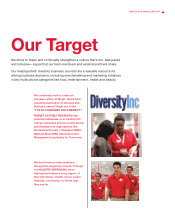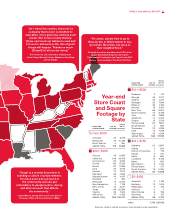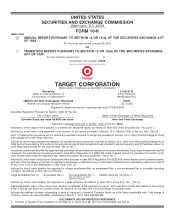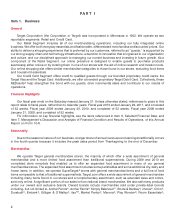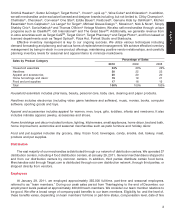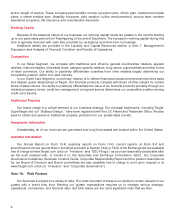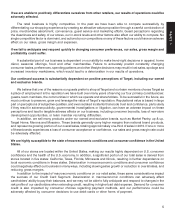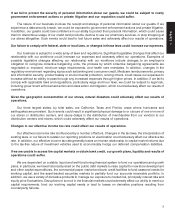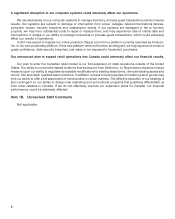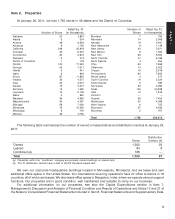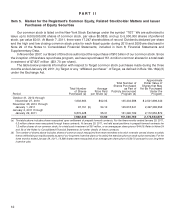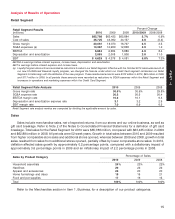Target 2010 Annual Report Download - page 27
Download and view the complete annual report
Please find page 27 of the 2010 Target annual report below. You can navigate through the pages in the report by either clicking on the pages listed below, or by using the keyword search tool below to find specific information within the annual report.
If we are unable to positively differentiate ourselves from other retailers, our results of operations could be
adversely affected.
The retail business is highly competitive. In the past we have been able to compete successfully by
differentiating our shopping experience by creating an attractive value proposition through a careful combination of
price, merchandise assortment, convenience, guest service and marketing efforts. Guest perceptions regarding
the cleanliness and safety of our stores, our in-stock levels and other factors also affect our ability to compete. No
single competitive factor is dominant, and actions by our competitors on any of these factors could have an adverse
effect on our sales, gross margin and expenses.
If we fail to anticipate and respond quickly to changing consumer preferences, our sales, gross margin and
profitability could suffer.
A substantial part of our business is dependent on our ability to make trend-right decisions in apparel, home
d´
ecor, seasonal offerings, food and other merchandise. Failure to accurately predict constantly changing
consumer tastes, preferences, spending patterns and other lifestyle decisions may result in lost sales, spoilage and
increased inventory markdowns, which would lead to a deterioration in our results of operations.
Our continued success is substantially dependent on positive perceptions of Target, including our owned
and exclusive brands.
We believe that one of the reasons our guests prefer to shop at Target and our team members choose Target as
a place of employment is the reputation we have built over many years of serving our four primary constituencies:
guests, team members, the communities in which we operate and shareholders. To be successful in the future, we
must continue to preserve, grow and leverage the value of Target’s reputation. Reputational value is based in large
part on perceptions of subjective qualities, and even isolated incidents that erode trust and confidence, particularly
if they result in adverse publicity, governmental investigations or litigation, can have an adverse impact on these
perceptions and lead to tangible adverse affects on our business, including consumer boycotts, loss of new store
development opportunities, or team member recruiting difficulties.
In addition, we sell many products under our owned and exclusive brands, such as Market Pantry, up & up,
Target Home, Merona and Mossimo. These brands generally carry higher margins than national brand products,
and represent a growing portion of our overall sales, totaling approximately one-third of sales in 2010. If one or more
of these brands experiences a loss of consumer acceptance or confidence, our sales and gross margin rate could
be adversely affected.
We are highly susceptible to the state of macroeconomic conditions and consumer confidence in the United
States.
All of our stores are located within the United States, making our results highly dependent on U.S. consumer
confidence and the health of the U.S. economy. In addition, a significant portion of our total sales is derived from
stores located in five states: California, Texas, Florida, Minnesota and Illinois, resulting in further dependence on
local economic conditions in these states. Deterioration in macroeconomic conditions and consumer confidence
could negatively affect our business in many ways, including slowing sales growth or reduction in overall sales, and
reducing gross margins.
In addition to the impact of macroeconomic conditions on our retail sales, these same considerations impact
the success of our Credit Card Segment. Deterioration in macroeconomic conditions can adversely affect
cardholders’ ability to pay their balances, and we may not be able to fully anticipate and respond to changes in the
risk profile of our cardholders when extending credit, resulting in higher bad debt expense. Demand for consumer
credit is also impacted by consumer choices regarding payment methods, and our performance could be
adversely affected by consumer decisions to use debit cards or other forms of payment.
5
PART I


